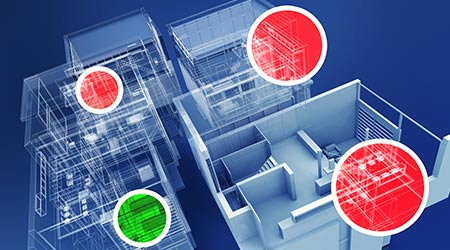
It’s Difficult To Evaluate The Link Between Energy And Occupant Performance
June 15, 2016
To evaluate how well a building is achieving or sustaining its fundamental purpose, functional metrics of building performance must include measures of tenant or occupant responses to indoor environmental exposures. These metrics may be characterized as: 1) objective measures, which are obtained through clinical testing; and 2) perceptual and affective measures, which are obtained through surveys, questionnaires, and interviews.
Measures of occupant performance are also essential in evaluating how well a building is achieving or sustaining its fundamental purpose. Occupant performance is typically expressed in terms of measurable and controllable parameters and values related to the function provided in the indoor environment. Examples of these metrics are: number of phone calls processed per unit of time, number or frequency of absences from the workspace, frequency or percentage of nosocomial infection rates, and percentage of increase in student achievement. Occupant performance data are obtained either through occupant interviews and surveys (i.e., self-reporting) or by independent measures of performance.
Traditional measures of facility productivity are often confused with measures of occupant performance. Whereas occupant performance assesses functional action or occupant behavior in the indoor environment, productivity is a transformed economic metric of occupant performance. It includes metrics such as cost of salaries and wages for substitute workers due to sick leave; lost revenue due to absence of workers; or direct and indirect health-care costs due to worker illnesses.
Fundamentally, these metrics do not provide information on the effectiveness of the energy consumed in buildings to provide for acceptable human responses, occupant performance, or productivity. Occupant acceptability is a primary attribute that is independent of the building’s function. However, this measurable attribute can also be correlated with exposure attributes that vary for specific building functions. The measured values of occupant acceptability can also be compared with design criteria, building codes, and design standards.
This quick read is from Davor Novosel, the chief technology officer for the National Energy Management Institute Committee (NEMIC), and James E. Woods, Ph.D., P.E., who has more than 50 years experience in energy and environmental analyses and who has been responsible for more than 30 research projects and 250 investigations related to indoor environmental quality, energy use, and human responses. Read more from them about energy and occupant performance.
Next
Read next on FacilitiesNet












